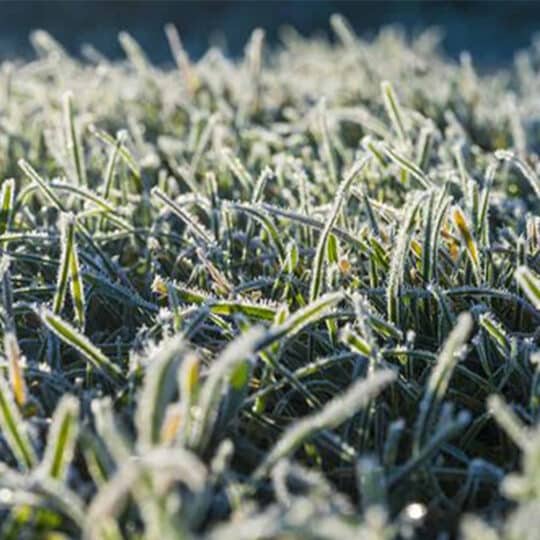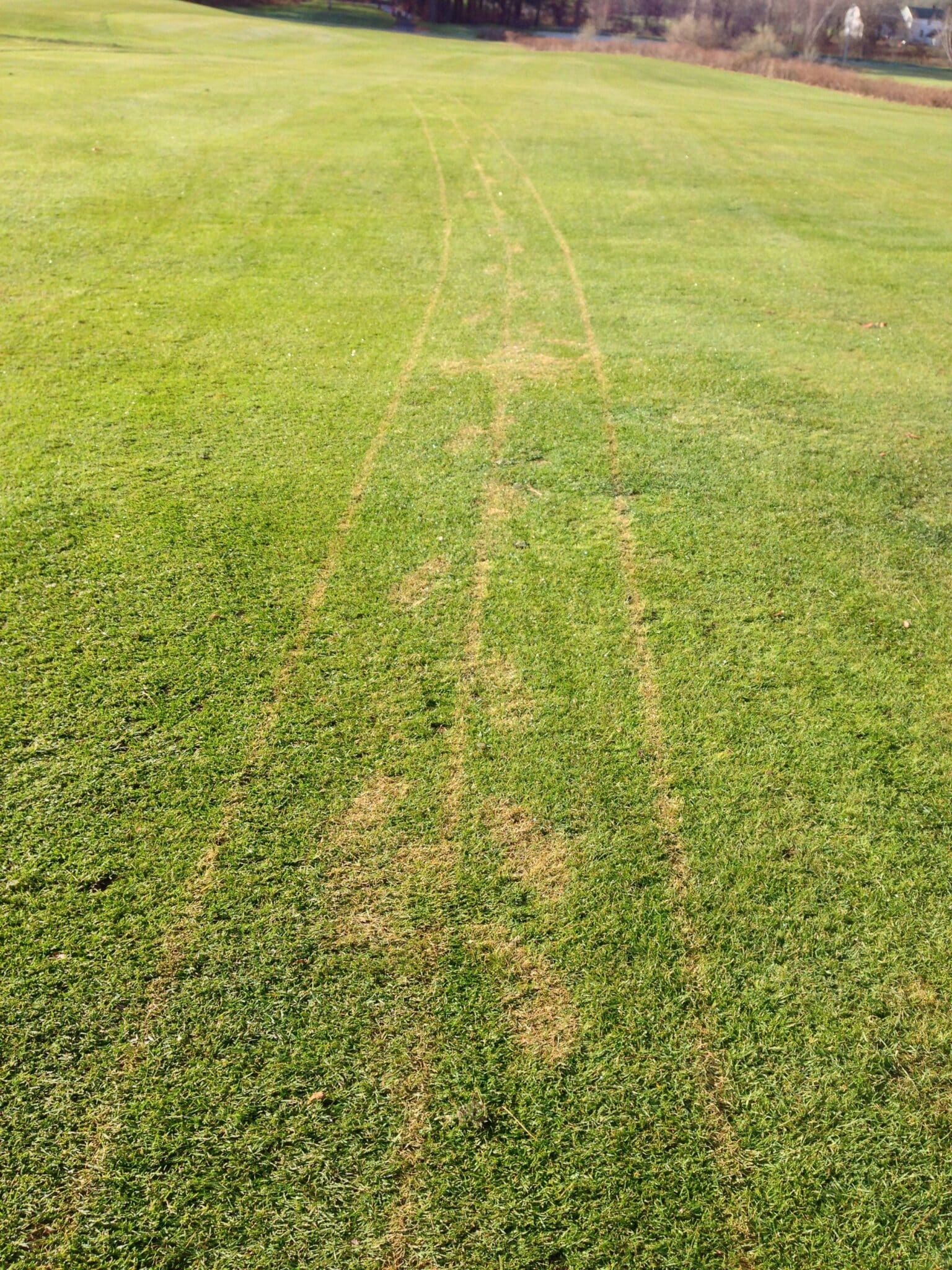Frost Delay

If you are a golfer, it is a familiar but dreaded term in the spring and fall seasons in our climate zone. Frost delay!
As former Golf Course Superintendents, we have had to announce frost delays throughout our careers. Trust us when we say, frost delays are dreaded just as much on our end, but necessary to protect the turf from damage. Not only did it upset our customers, the golfer, but forced us to delay course preparation.
Frost is water or water vapor that has deposited itself on a surface, in our instance, turf. Certain weather conditions are required for the formation of frost. Let us explore the science behind frost development in more detail below.
- At night, grass loses energy or emits energy into the atmosphere after a warm day.
- A clear night allows more energy to be emitted from the turf blade into the sky, reflecting in a net loss of energy, creating a cooling effect which forms dew on the leaf blades.
- Temperatures at or below 38 degrees Fahrenheit (F) factor in frost formation. However, ambient air temperatures that we read online or see on TV from weather stations are recorded about 5 ft. above the ground. The surface temperatures are a couple of degrees lower or closer to the freezing point of 32 degrees F. Hence why we use the golden rule to follow 38 degrees with the expectation of frost formation.
- Clouds could help prevent frost by trapping the energy emitted by acting as a blanket to hold the warm air in.
- Little to no wind helps frost formation due to the fact it allows cooling pockets to form around the surface. You will hardly notice frost during a moderate wind speed at night because of the air moving around thus disrupting the “cooling pockets.”
- Frost may not develop under trees due to the radiation effect of the canopy by pushing energy / bouncing air / water molecules back onto the turf. A reason frost can be present on an open field but not under a tree close by. Remember those chemistry days?
- As the weather gets too cold for turf growth, the turf naturally moves water out of the leaf blade and hardens off. Our winterize fertilizer helps with the process. Once the plant moves the moisture out, the threat from freezing weather and frost decreases.
When frost is present, cells in turf may become frozen and can puncture turf walls and cause intercellular damage if physical force is applied, such as footsteps or tires. Damage will appear purple in hue and can be permanent causing costly repairs.
To conclude, frost is inevitable. When frost is present, it is advised to wait until temperatures rise enough and frost cover has dissipated to walk or have equipment ride on the turf. Once this has occurred, it is safe to start your activities as you desired. Patience is a virtue in the turf world along with many things we do in life.
